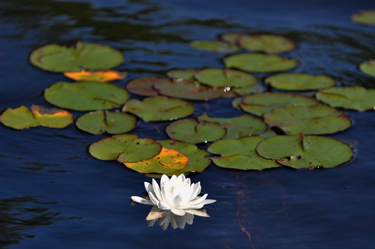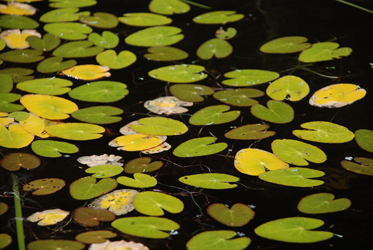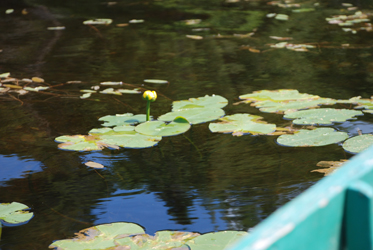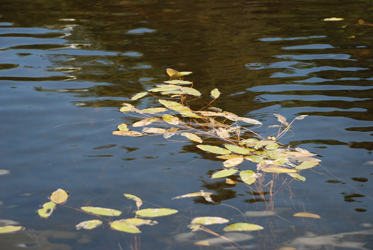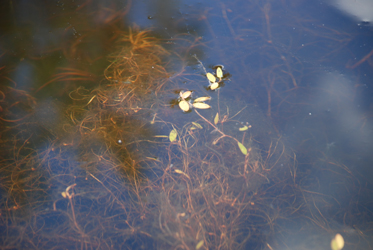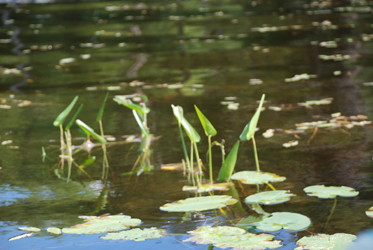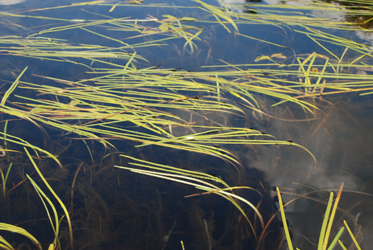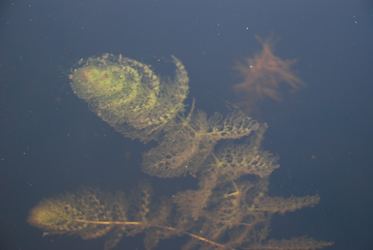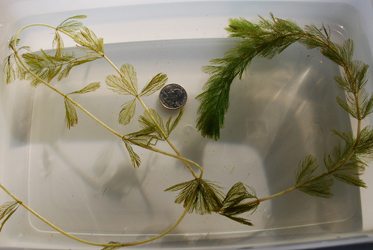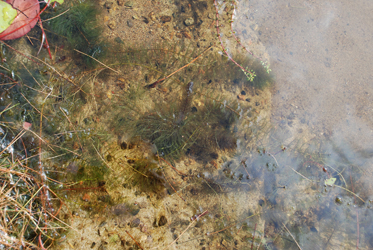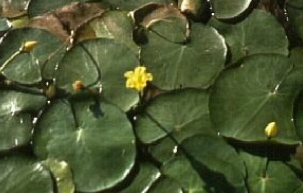Native Aquatic Plants found frequently in our Lake
lake and grows in quiet water up to two meters deep. The leaves are
nearly round more so than either the Little Floating Heart or or the
Spatterdock. The leaf size is usually intermediate between the former
two measuring 10 to 30 cm in diameter and containing a wedge-shaped
notch. The tops of the leaves are green the underside reddish purple.
The fragrant flowers are 7-20 cm in diameter with numerous white
petals arranged in circular clusters. Please avoid picking or paddling through these lilies.
Little floating heart (Nymphoides cordata): This is a common
lilly pad in our lake with heart-shaped leaves 1.5 to 5cm wide. Each
leaf is supported by a single stem. Blossoms are small, about 1cm in
diameter, that form in July.DSC 0008
lilly pad in our lake with heart-shaped leaves 1.5 to 5cm wide. Each
leaf is supported by a single stem. Blossoms are small, about 1cm in
diameter, that form in July.DSC 0008
two meters has large heart-shaped leaves 7 to 40cm long. Each stalk
supports one leaf. Flowers are yellow and ball shaped with 5 to 6
petals.DSC 0034
pond weeds in the lake. All have eliptical leaves (greenish brown) that
float at the surface. This one grows in water that is up to a couple
of meters deep and has slender submerged stems with few if any
submerged leaves. DSC 0029
submerged leaf system and sometimes few to no surface leaves. This
species lives in shallow water usually less than a meter deep. DSC 0057
lines and has a purple flower in late July and August. DSC 0033
One extends to and lies on the surface of the water the second, which
is less obvious in the back ground, is always submerged. Both can form
thick patches in water less than 2 meters deep. DSC 0037
